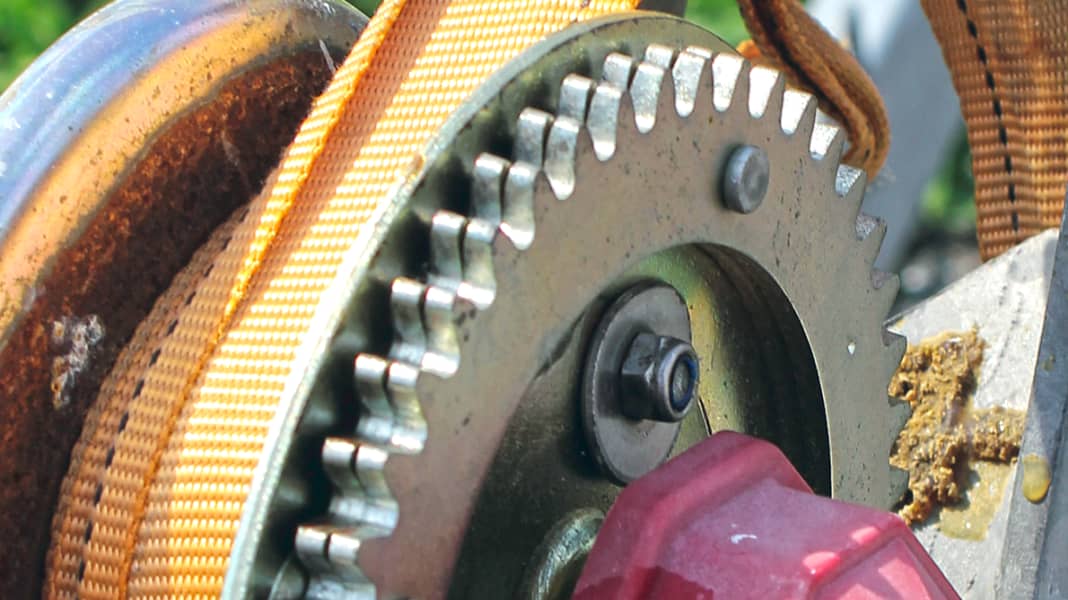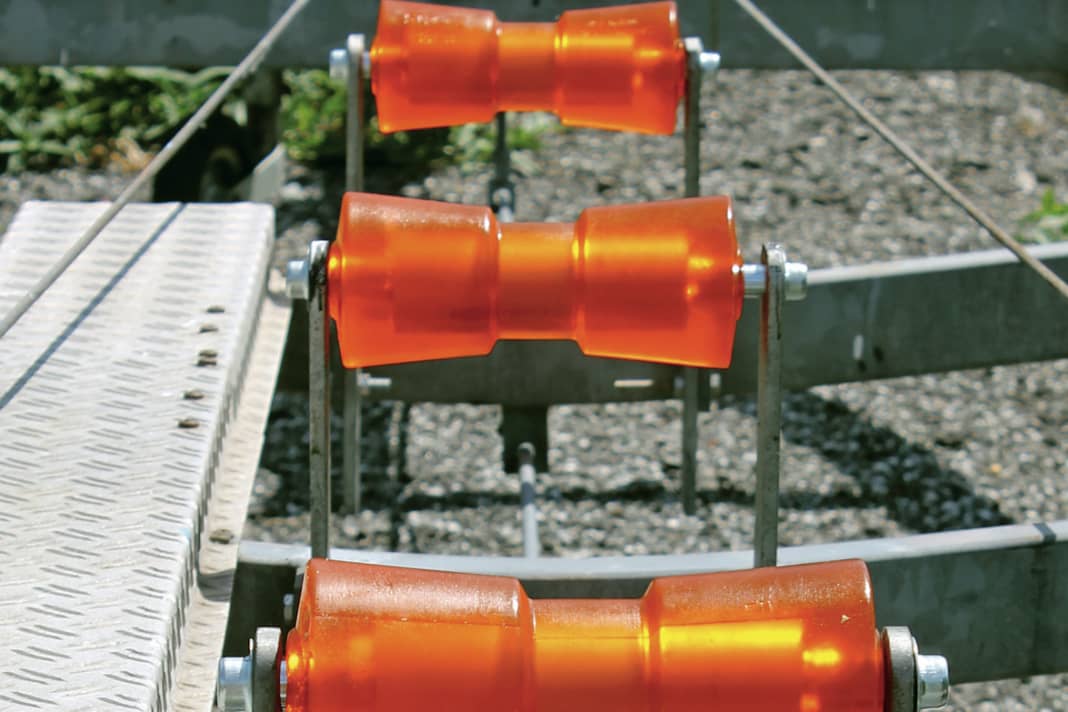






Boat trailers often lead a shadowy existence. For most of the year, they are left unnoticed in a remote corner of a shed or property. When they are needed, whether for a holiday cruise or transfer to winter storage, the surprised owner discovers problems that could have been avoided with little effort. Damaged keel rollers, frayed winch ropes or defective electrics may not be a big deal, but they can be an annoying time waster when the slip date is approaching.
Here we use the example of a 15-year-old 2.2 tonne Ohlmeier trailer to show you which parts you can easily replace and maintain yourself. For safety reasons, it is better to leave more extensive repairs, such as to the brake system, the overrun hitch or the axles, to an expert.
Keel rollers
weight. On uneven roads in particular, they often have to take heavy knocks, which can lead to breakage or at least bent shafts in the long term. Most trailers are fitted with hard rubber castors as standard, but experience has shown that their durability is limited. If you want to replace them, it is advisable to switch to polyvinyl castors. Although these are more expensive, they last considerably longer and simplify the slipping process thanks to their better rolling properties. The shafts should be replaced at the same time. When replacing the shafts, make sure that the locking plates on the shaft ends are pressed on properly. The best way to do this is with a suitable ring spanner and a hammer.
Supports
They are designed to prevent the boat from tipping sideways (pictured right and below). Although they (should) carry less load than the keel rollers, the adjustment mechanism needs to be scrutinised. As it is rarely used, the threads and spindles must be kept smooth with spray oil from time to time. The contact surfaces, on the other hand, are often soiled with paint. Thorough cleaning and, if necessary, a fresh coat of tyre paint will help here. If the pads are permanently damaged, the only option is to replace them. Glued-on rubber mats or carpet remnants are an emergency solution and are no substitute for a permanent repair.
Slip wheels
If the trailer has adjustable slip wheels (r.), the air pressure and lifting mechanism must be checked. Air-filled slip wheels often leak. Foam-filled wheels, which are available from accessory dealers or directly from the trailer manufacturer, are better. Although more expensive, they last considerably longer and make the slipping process much easier. The lifting hydraulics should be cleaned and greased from time to time and the steel cables checked for corrosion.
Handwheels
Removable parts of the trailer, such as the light strip, are usually fastened with handwheels or knurled nuts (r.). If these are corroded, it is often almost impossible to remove the light strip. First aid in such cases is rust remover. If the screws and nuts are heavily rusted, they must be replaced. These parts are also available for little money from trailer accessory dealers.
Light strip
Electrical faults on the removable light strip (below) are usually caused by corrosion. Either a plug is rusted, a bulb holder is corroded or a cable is worn through. While each problem can be solved individually with a little contact spray (above) or insulating tape, a combination of all points involves a considerable amount of time and money. If there are also broken rear light covers or damaged reflectors, you should check whether an all-round replacement makes more sense than repairing the individual parts. Complete light strips with new (modern) tail lights are available from every trailer manufacturer. The advantage of this solution is the precision fit of the light strip and the fact that you have peace of mind for the next few years. All the individual parts together are often more expensive than a new light strip. In the case of our Ohlmeier trailer, there was also the fact that new light strips are made of aluminium - which means that the weight can be significantly reduced.
Cable winch
The winch (left) is of particular importance - defects in the mechanics or the rope/strap can lead to considerable damage. Damaged or frayed steel cables must therefore always be replaced. The same applies to belts. With the winch mechanism, the focus should be on smooth operation and a functioning backstop. Here too, thorough cleaning and a little spray oil often work wonders. If the winch cannot be saved, it is available in various designs from accessory dealers. Another point that is often forgotten is the correct mounting position. If the winch and towing eye positions on the boat are at different heights, this results in increased friction - and therefore unnecessary wear.
Mudguard
The light reflectors on the trailer (below) are one of the parts that often break and whose defects are hardly noticed by the owner. However, they play an important role at the MOT and are checked. As these parts are available for little money, defective reflectors should always be replaced.

